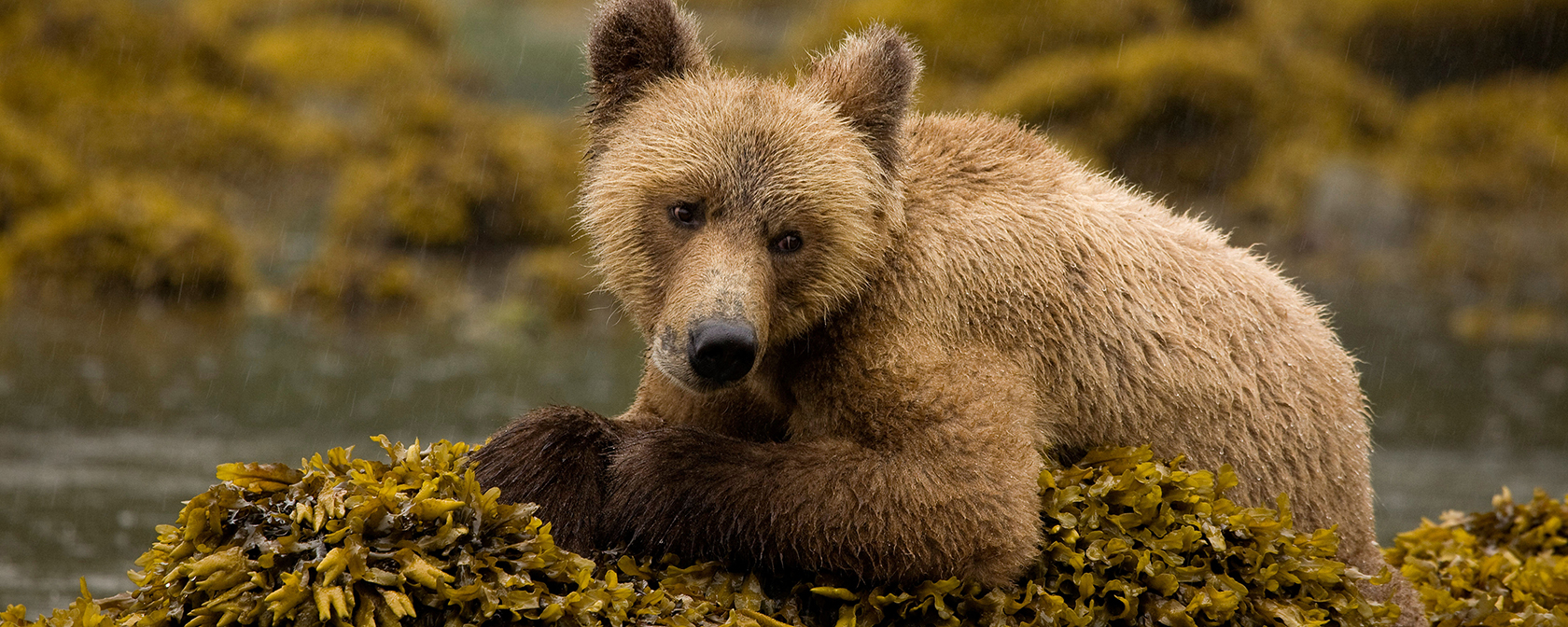By Sara Amundson and Kitty Block
Grizzly bears in the lower 48 states should retain their current protections under the Endangered Species Act, according to the U.S. Fish and Wildlife Service, the primary federal agency that makes decisions on the conservation of wildlife species. This is encouraging news for these native carnivores who have been under attack from trophy hunting interests in the states they live in, and who need all the help they can get to survive.
In a report published yesterday, the USFWS recommended that grizzly bears retain “threatened” status based on a five-year scientific status review.
Under the previous administration, the USFWS, in 2017, sought to prematurely delist grizzly bears in the Greater Yellowstone Ecosystem as a handout to trophy hunters. We stopped this effort—and with it the first trophy hunting season on grizzlies in decades—in its tracks with a federal court victory in 2018 followed by an appeals court victory in 2020.
There are fewer than 1,800 grizzly bears now in the lower 48 states—a small number, by any measure. These animals were nearly wiped out of existence in the United States between 1915 and 1975. Today they occupy less than 2% of their original range in the United States.
Grizzly bear populations increase slowly. Female bears do not reproduce until they are between three and eight years of age and they produce small litters, with many years between each litter. Not all of the cubs survive to adulthood. That is why every bear must count, and why it may take a decade for a female bear to replace herself in the population. And the threats to their survival are many, including poachers, ranchers and state wildlife agencies who continually target these animals and kill them over fear and exaggerated claims that they kill cattle—claims we debunked using USDA data.
In its report, the USFWS pointed to tremendous threats grizzlies continue to face, including “limited habitat connectivity, management of access by motorized vehicles, human-caused mortality and uncertainty surrounding future conservation efforts in some ecosystems.”
The USFWS report also correctly recognized that the long-term survival of grizzly bears depends on establishing populations in parts of their historic range where they remain absent, like Washington’s North Cascades and Idaho’s Bitterroot ecosystem. We urge the USFWS to follow through by developing a comprehensive plan to achieve a truly interconnected, recovered population of grizzly bears.
States that are home to these bears should be doing all they can to protect them but instead they have chosen to sell them out to trophy hunting interests. We recently told you about Montana’s state legislature passing a host of bills in anticipation of a federal delisting. Those bills would have, among other atrocities, allowed ranchers to shoot grizzly bears they “perceived” as a threat to their livestock. They included measures such as barring the relocation of grizzly bears to promote their recovery.
These bills also allow hound-hunting of black bears in early spring and expanding wolf snaring and trapping, which could also harm grizzly bears and cubs. Fortunately, continuing federal protection will shield grizzlies from some of the worst impacts of these bills if they become law.
The Montana and Wyoming delegations in Congress are also engaged now in efforts to delist these bears—a shortsighted approach because grizzly bears and other wildlife contribute heavily to these states’ economies, with thousands of tourists flocking there each year to catch a glimpse of these animals in the wild.
We are encouraged by the USFWS recommendation today, but so long as these other threats to grizzly bears continue our work is far from done. You can rest assured we will keep a vigilant eye and continue to work hard to ward off efforts by bad state legislators, wildlife managers and members of Congress to hurt these iconic animals.
Kitty Block is President and CEO of the Humane Society of the United States.




